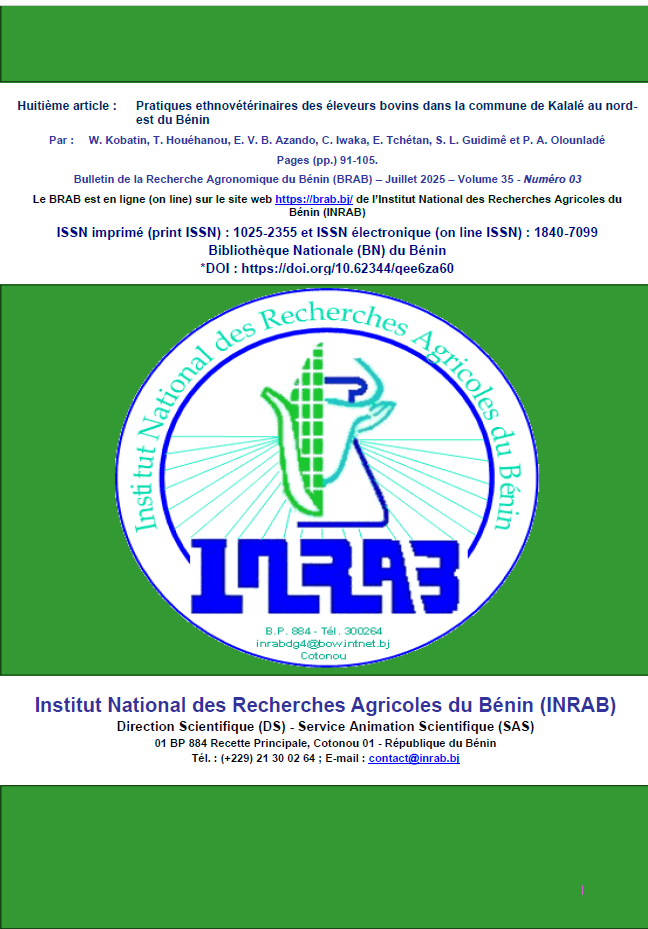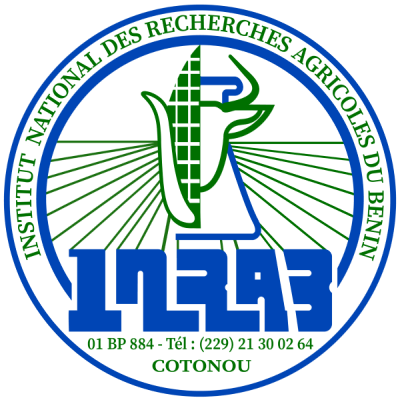Ethno veterinary practices of cattle breeders in the Commune of Kalalé in North-Eastern Bénin
DOI:
https://doi.org/10.62344/qee6za60Keywords:
Cattle diseases, phytotherapy, preparations, department of AliboriAbstract
In Benin, meat and milk obtained from animal farming are largely dependent on the bovine species. Like other animal species, cattle face a multitude of conditions that cause their productivity to drop. The control of these affections is focused not only on the use of synthetic products but also on the use of locally available medicinal plants. The objective of the study was to inventory the bovine affections subject to phytotherapy as well as the medicinal plants used for this purpose. The information was collected using a survey form from 125 breeders randomly selected from four districts in the Commune of Kalalé in North-Eastern of Bénin. From the results of the analysis of data from the survey, it appeared that 87.20% of cattle breeders expressed interest in phytotherapy for the control of diseases of the cattle herd. A total of 39 medicinal plants were mentioned for the treatment of digestive and respiratory ailments, foot infections, agalactia as well as external parasitosis. Digestive troubles were the most dominant and were constantly controlled thanks to plants such as Parkia biglobosa, Momordica charantia, Khaya senegalensis, Capsicum annuum, Pterocarpus erinaceus and Cassia siebericena. The leaves (43.05%) and the bark (33.18%) represented the organs most used for the formulation of recipes. Administered mainly orally, the powder (29.88%) represented the main method of preparing recipes for the extraction of bioactive molecules. The study makes it possible to develop of phytotherapeutic knowledge used for the care of cattle. Biological tests will allow us to better understand the real potential of the plants mentioned for their development.

Published
Issue
Section
License
Copyright (c) 2025 Bulletin de la Recherche Agronomique du Bénin

This work is licensed under a Creative Commons Attribution-NoDerivatives 4.0 International License.
Les articles publiés par le Bulletin de la Recherche Agronomique du Bénin sont en libre accès. Ils sont gratuits pour tout le monde, immédiatement téléchargeables dès la publication et distribués sous la licence CC BY-NC-ND (https://creativecommons.org/licenses/by-nc-nd/4.0/).







